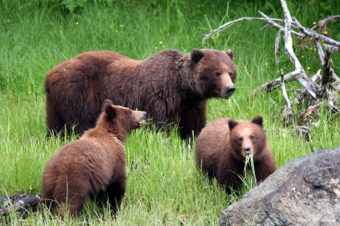The spring bear hunting season closed Monday, and that means it’s time for local biologists to do their bear survey.

Every year, if the weather allows, they choose a sample area to fly over to get an estimate of the season’s bear population.
Kodiak National Wildlife Refuge bear biologist Bill Leacock said the refuge and the Alaska Department of Fish and Game have been doing this type of survey since the 1980s and, this year, they’ll scan two areas in the southwestern part of the island.
A number of factors play into the timing of the survey, Leacock said, including how warm the winter has been.
“We wanna maximize the number of bears that are out of the dens,” he said. Some bears come out a bit later, especially the sows with the younger cubs, so we wanna do it as late as possible in the spring, but before leaf out, and after the hunting season, so it’s kind of a tight squeeze there. Generally, we’ve got about two weeks in there with a little bit of wiggle room.”
While the last few winters have been especially balmy for Kodiak, he said this year has been more typical, and the vegetation won’t be a barrier to spotting the bears just yet.
Usually boars – or male bears – emerge in early April.
“Followed by other single bears of both sexes and then sows with older cubs, say 1-year-old or 2-year-old cubs, and then the last to come out in general are sows with what we call cubs of the year or spring cubs, cubs that were born this year that are just a few months old.”
Leacock said since bears are out, it’s a good idea for city residents to watch out for signs of them while hiking. He says look for scat, tracks, or startled birds, especially when wandering through higher country.
If a hiker spots a bear, but it doesn’t notice them, he said it’s a good idea to turn back.
“If the bear sees you and it’s relatively close, I would talk gently to it,” Leacock said. “You don’t want to startle it. If it’s already seen you and it hasn’t moved. Talk gently to it, and then back off, keeping your eye on the bear.”
Leacock will have a better idea of how many bears are out and about soon. He says if weather conditions permit, they’ll fly out on Friday or Saturday.
